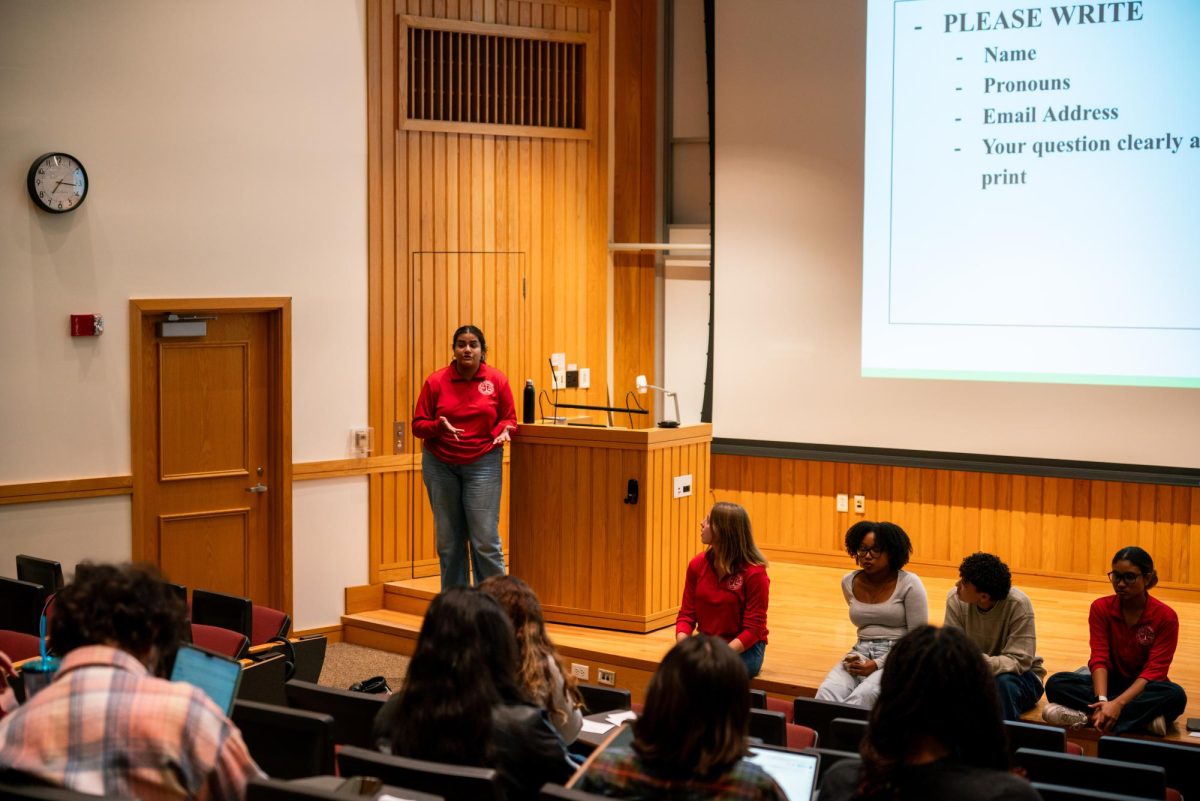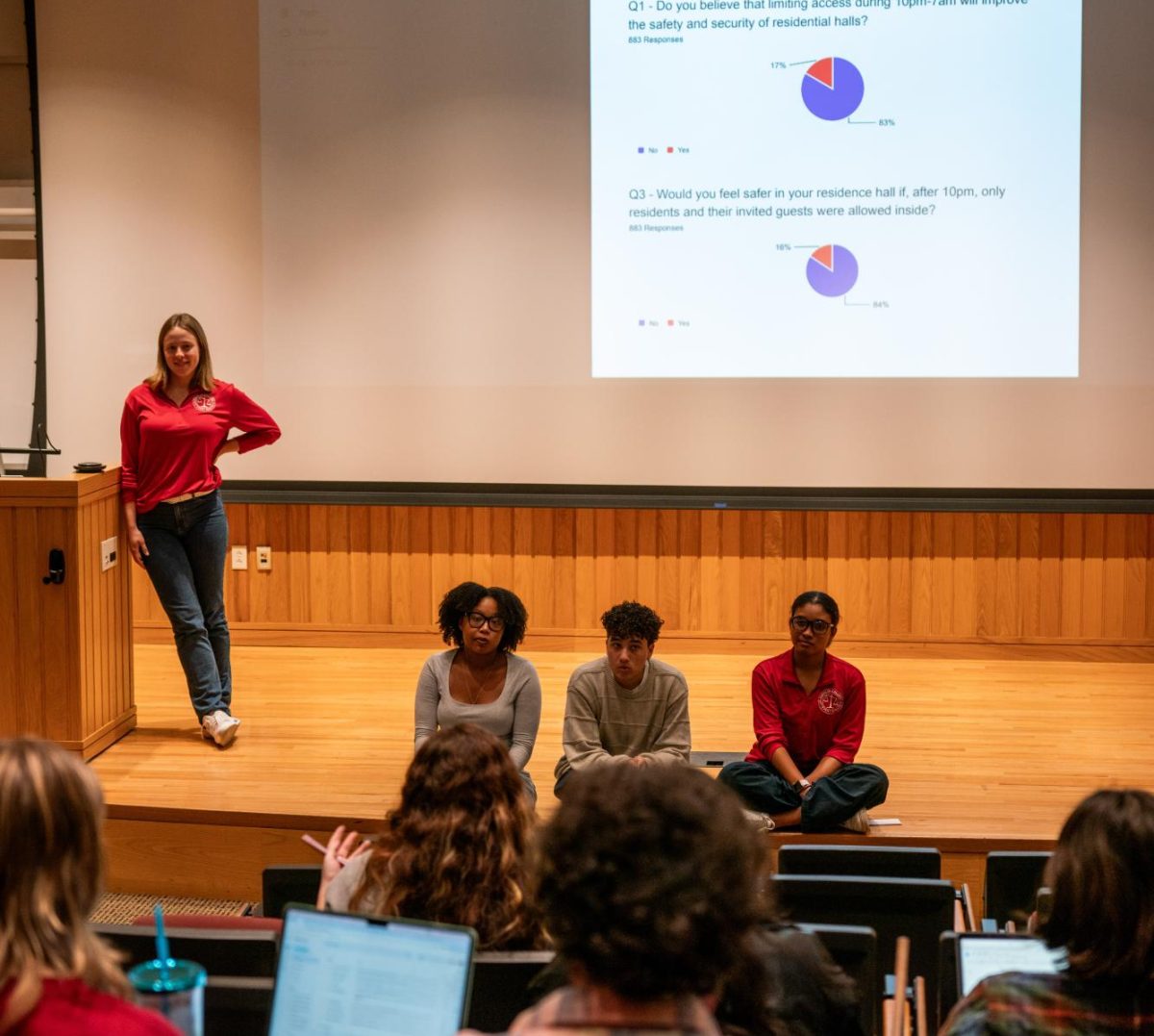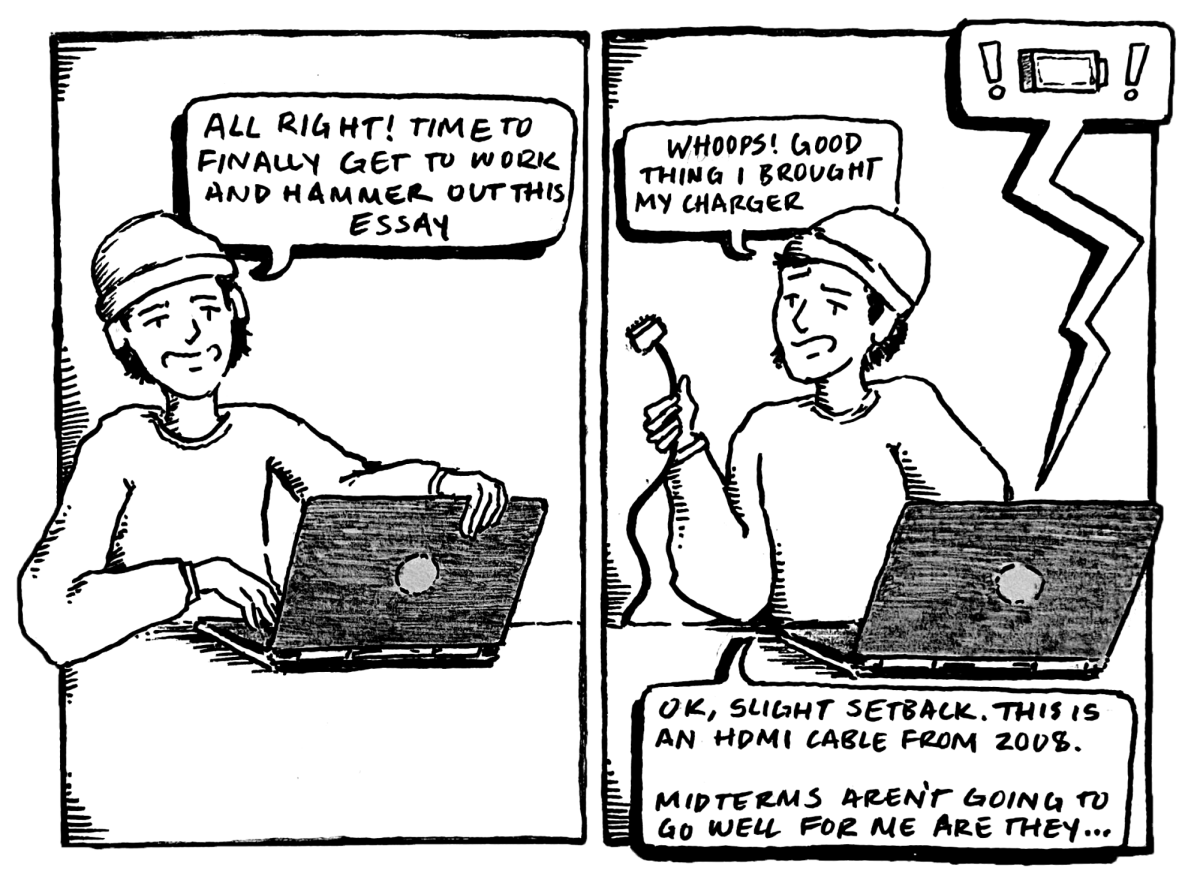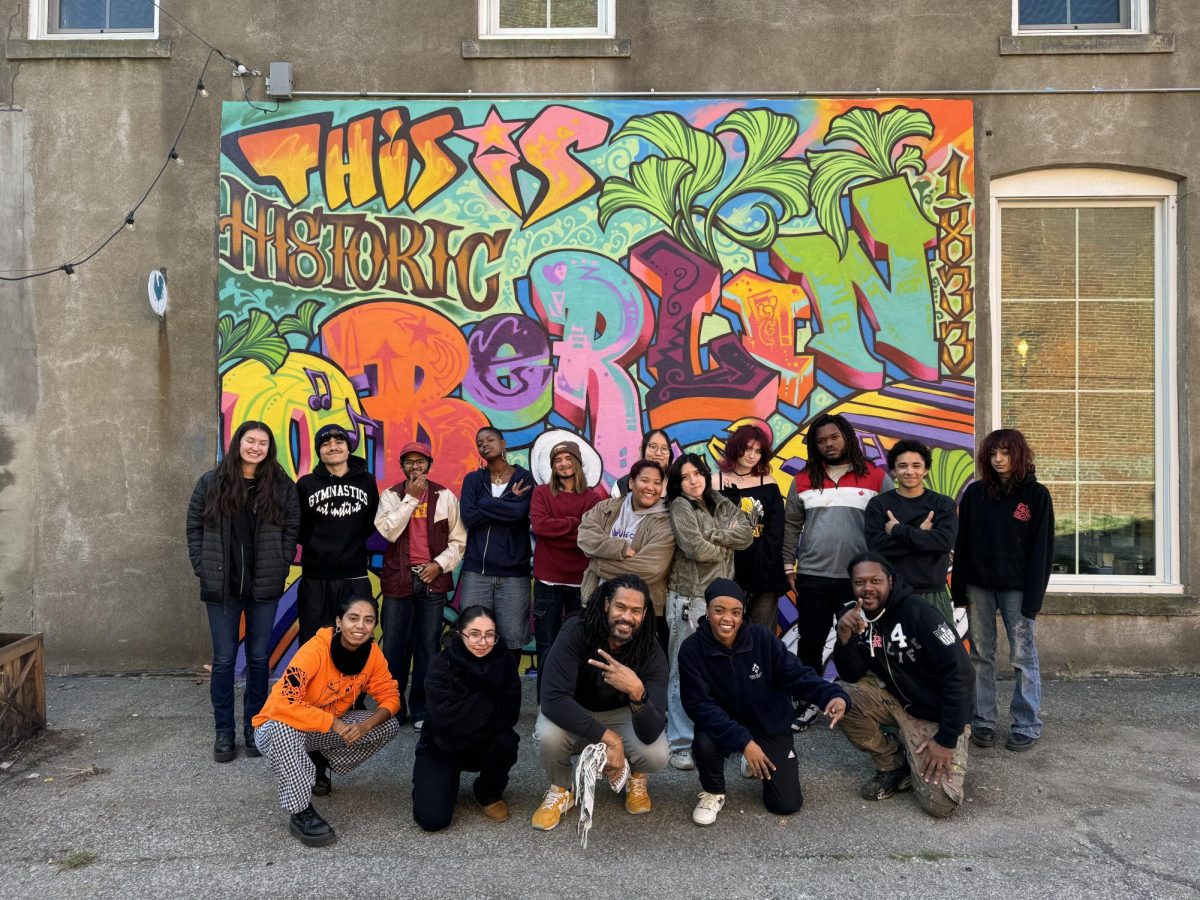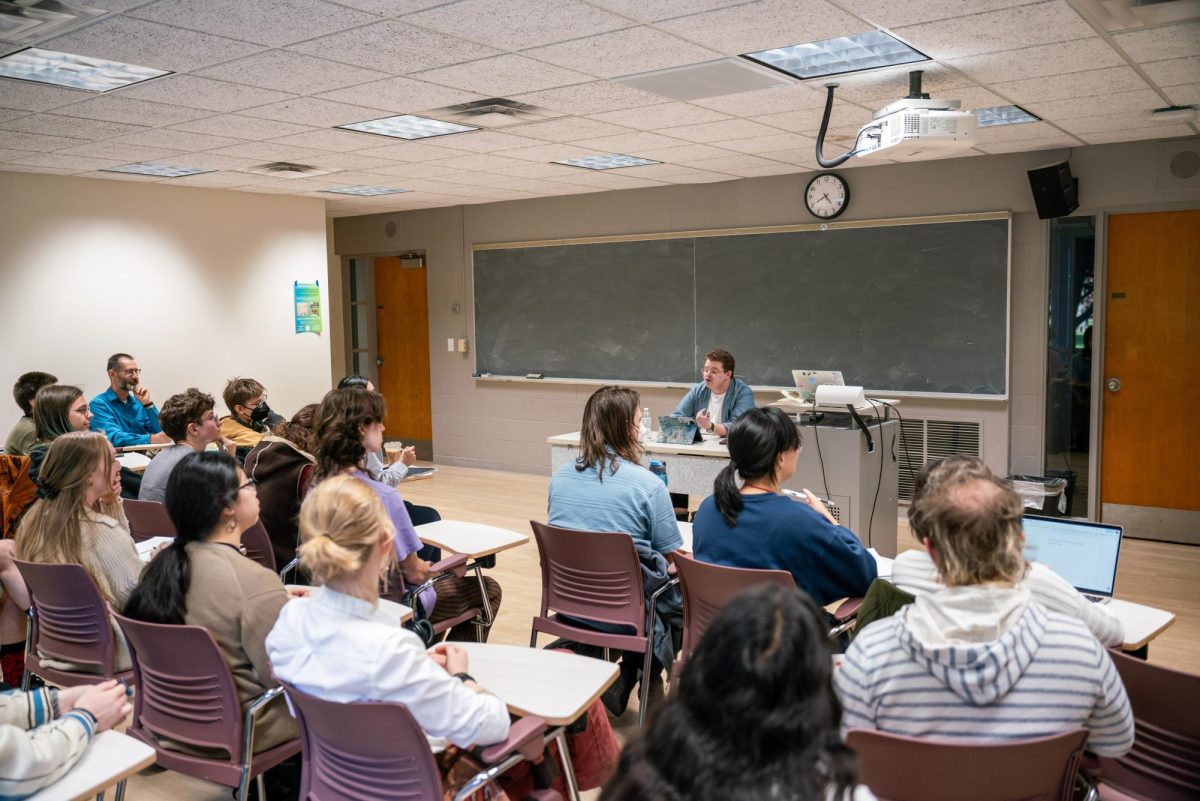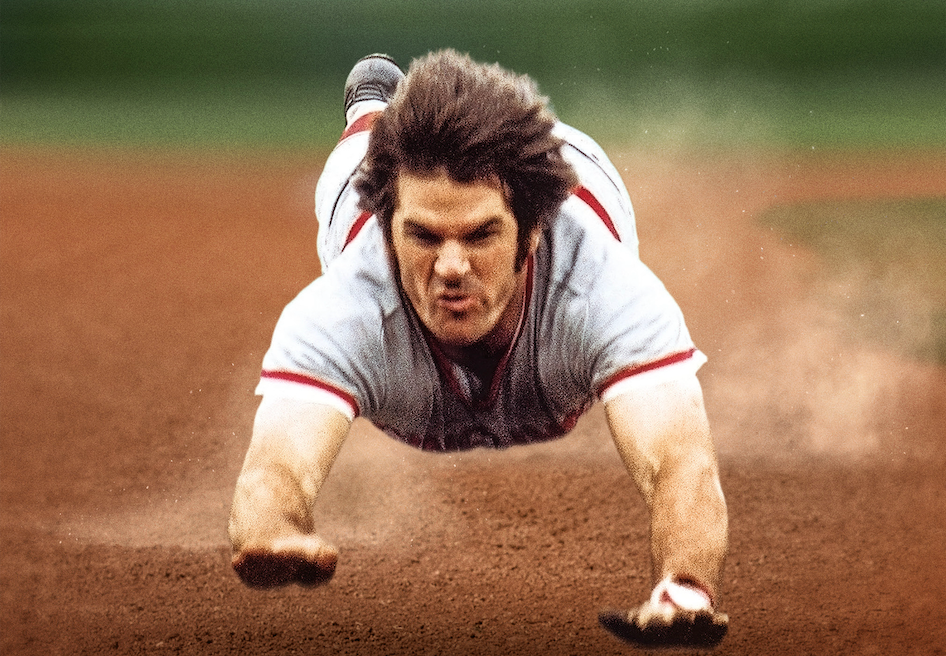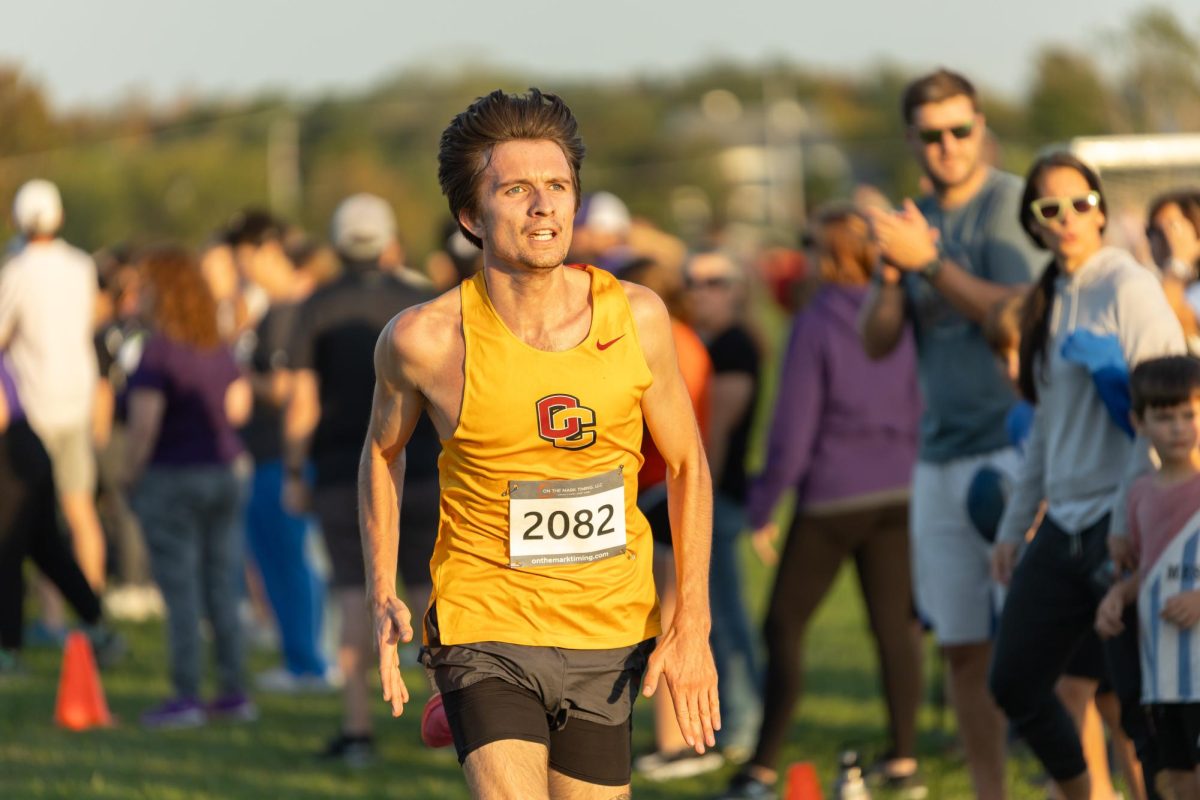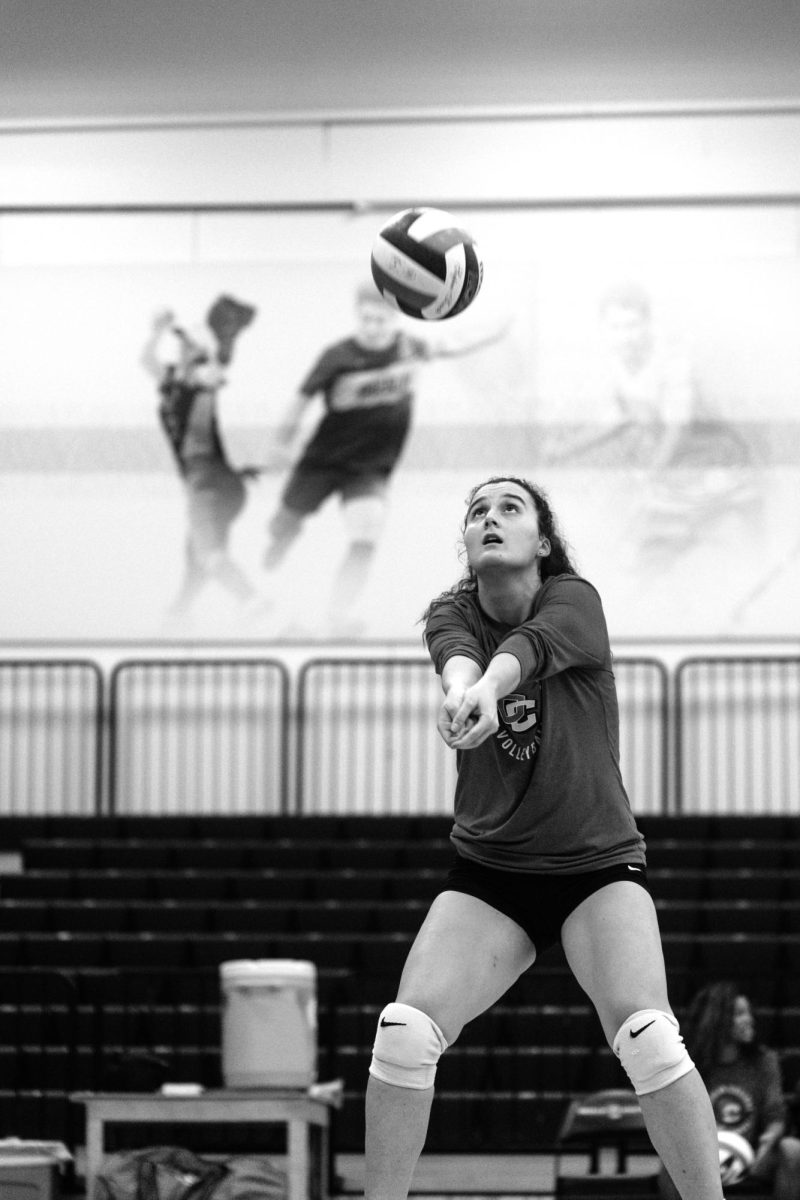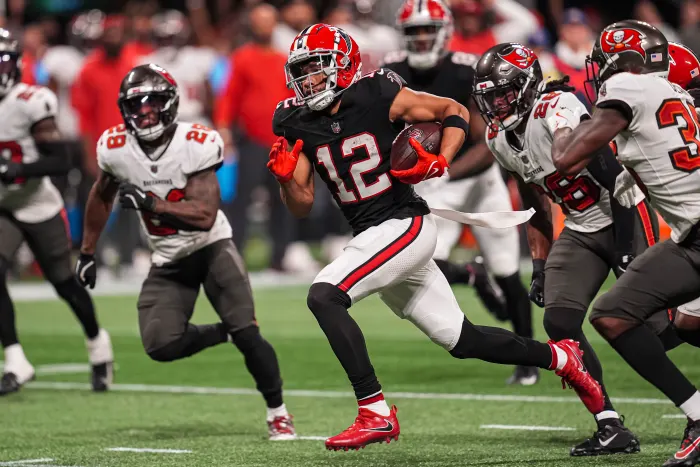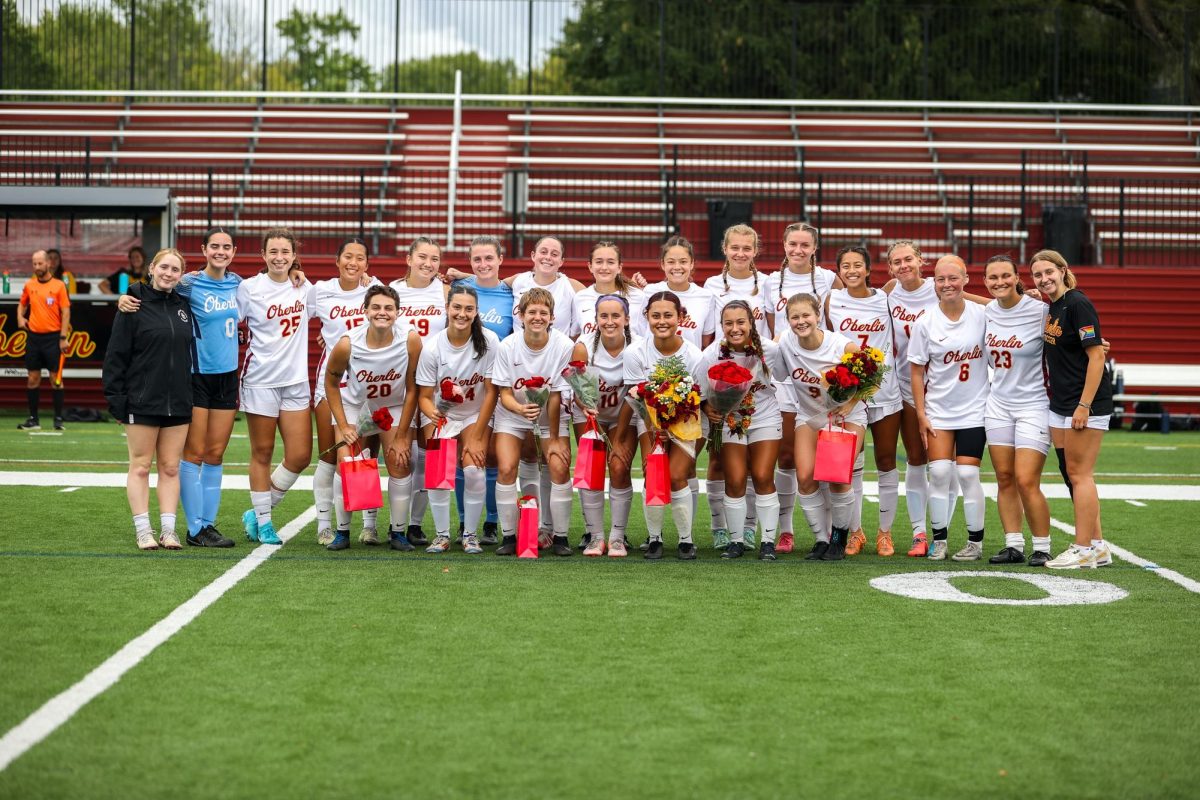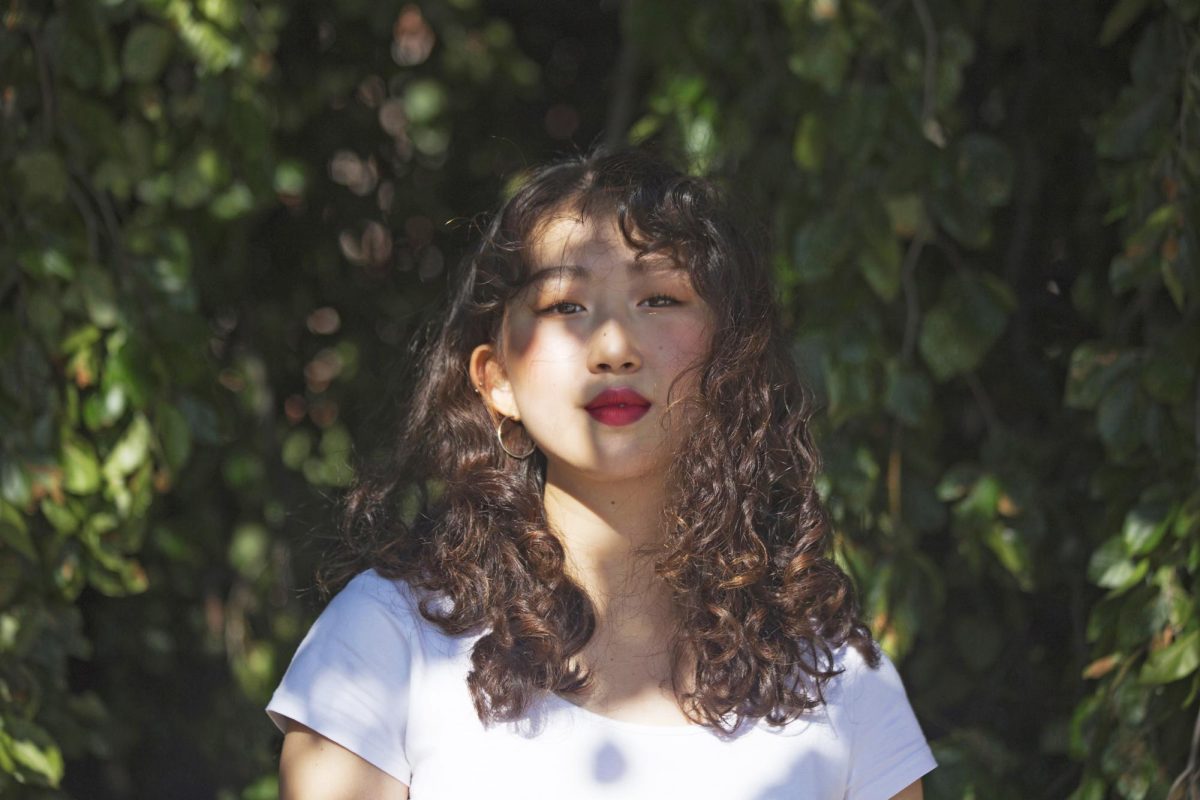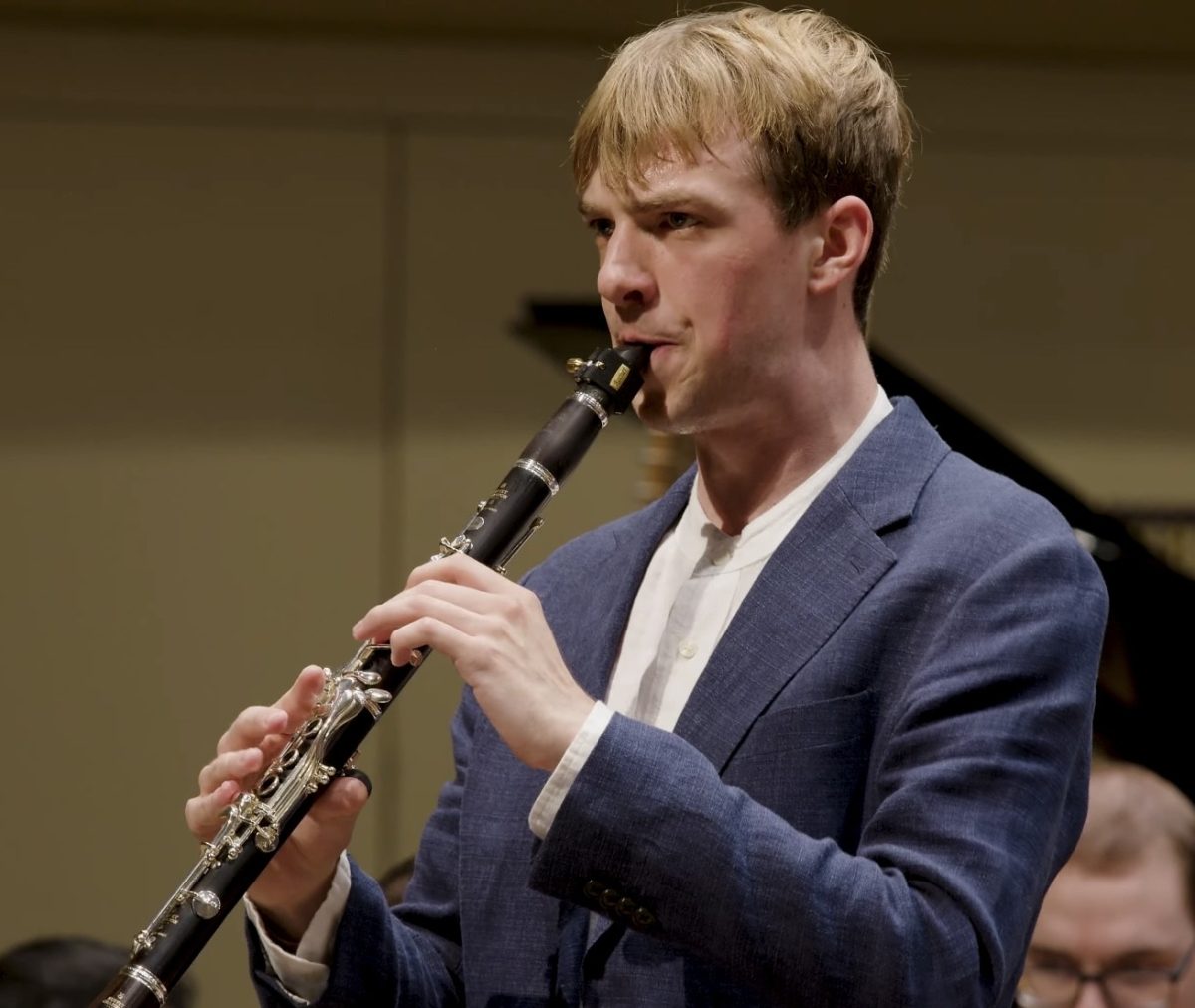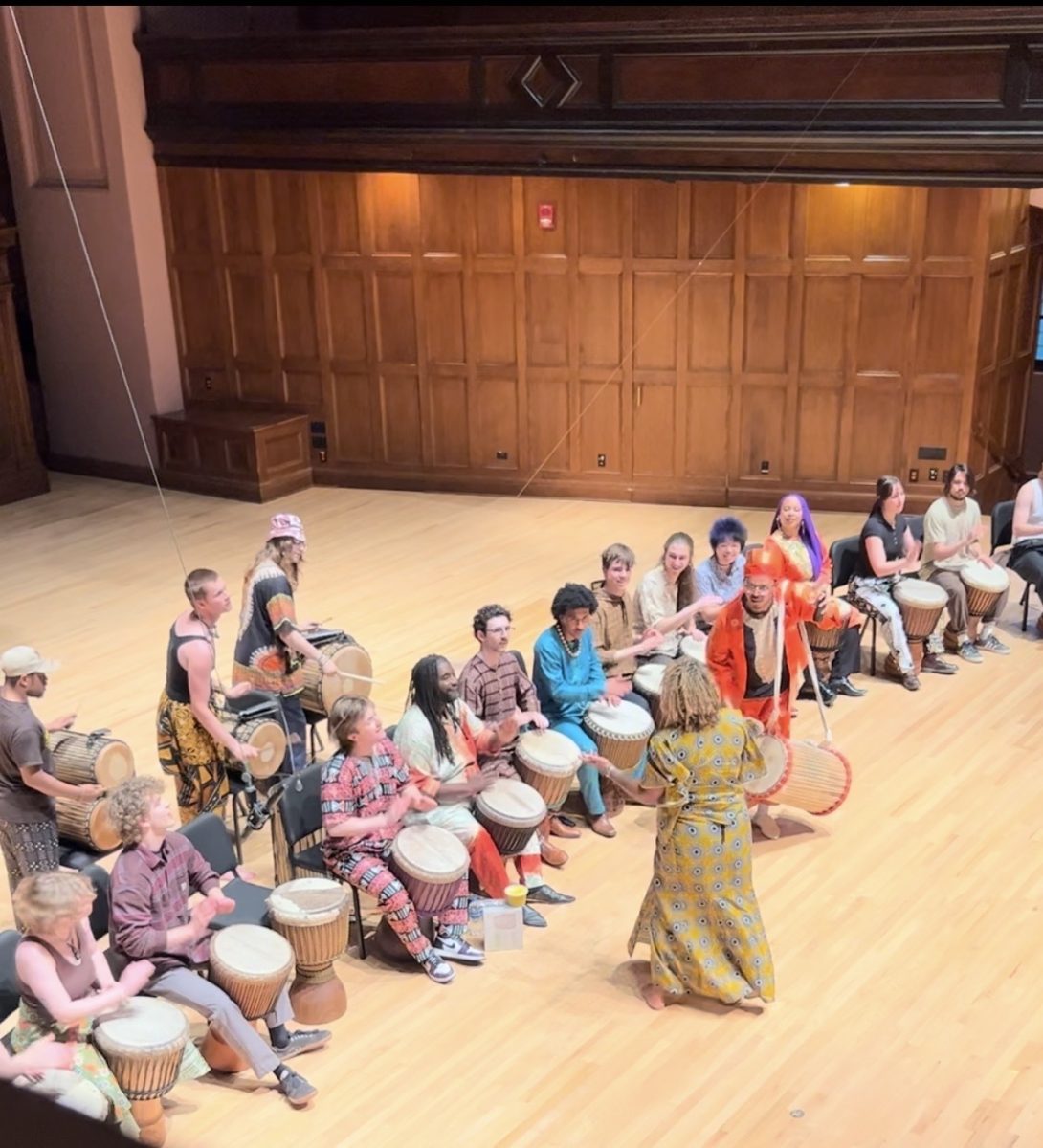Innovative Senior Show Highlights Natural Connections
April 12, 2013
Since their first year at Oberlin, College seniors Samantha Bergman and Nona Brown have been impressing audiences with their grace, agility and choreographic talent, on their own, in ensembles and as collaborators. Their senior show, What is it, then, between us?, which ran from April 5–6 in Warner Main Space, proved a fitting culmination of their college dance careers. The embodied collaboration among the ensemble of 15 dancers onstage reinforced the importance of this work as a collaboration between director-choreographers Bergman and Brown.
With a script written by ensemble member and College junior Charlotte Istel, What is it, then, between us? — the title taken from a line in Walt Whitman’s “Crossing Brooklyn Ferry” — tells about a search for reconnection to nature. Beginning and ending with definitions of “wildness,” the narration at times veers toward the heavy-handed. However, as the speakers grapple with their disconnection from nature — and, at times, their discomfort when alone in the wilderness, their desire for the “friction” of society — and as they acknowledge their own participation in a return-to-nature cliche, the script reveals careful nuances. Ultimately, the interplay between script and movement meaningfully strengthens the message of the show. The “rivers” between us appear as the physical connections between dancers, as the dynamic separation between humans and nature, and as the back and forth between spoken words, sounds of the environment and movements of bodies.
Bergman and Brown’s striking choreography acts as a representation of one speaker’s lamentation that what “used to be everything” has become “strange.” The performers’ solo movements, particularly their crawls across the floor, evoke animalistic gaits, and in the dancers’ partnered and group interactions, they move as a single organism. Clad in earth and flesh tones, the dancers blend in with their environment — the woods as well as the dance floor — and with one another. Their movement is simultaneously organic, beautiful and bizarre.
The motif of the show is that of a walking chain, in which multiple dancers — sometimes all 15 — wrap their arms around one another’s stomachs and walk back-to-chest across the dance floor. In the finale, the link of 15 dancers moves its limbs in waves and canons and at one point accordions out from a tight to a loose line, with the performers’ backs parallel to the floor in a variation of the piece’s crawling theme. Other inventive movements include a twisted roll on the floor, with dancers holding onto one another’s ankles, the rotation initiated by an upper body on one end; a pairing in which two dancers rise to their feet from the floor, supported only by one another’s heads; and a touching moment in which Brown, curled up in a fetal position, balances atop the thighs of a standing dancer, and the two are enveloped in an embrace by yet three more dancers. This sequence was a part of Brown’s “Untitled,” presented in Spring Back 2012. The entirety of that piece appeared in What is it, then, between us?, creatively broken up and integrated throughout the show.
One distinct segment showcases Bergman and a handful of other dancers, in light, flowing shirts, moving through tightly executed turns and raised on relevé. The choreography here — not as heavy as the rest of the piece — takes on the ethereal wind, along with its soundtrack of chiming bells and howling gales. Surrounding this section, one dancer has a slight costume change on stage, as she is helped by a partner to take off and put back on a shirt. The choice to include costume changes in the choreography was clever, as these moments too reveal our reliance on connections and interactions.
Bergman’s and Brown’s solos are especially fierce. Bergman walks and then balances on the topsides of her toes. Later, Brown does an almost grotesque three-legged crawl with one arm twisted around a leg into a single limb. The choreographers shine here in their strikingly beautiful struggles.
Evidently both meticulously thought-out and organically developed, What is it, then, between us? stands out particularly because of its innovative and stunning movement vocabulary. The show transcends its stock theme primarily because of the choreography itself — but also because of the interplay between script and dance, the ability of even the most basic embodied movements to reflect the message of fluvial interconnectedness that Bergman, Brown and Istel hope to convey. With What is it, then between us?, Bergman and Brown revealed how far they have come as artists over the last four years and made audiences eager to see where they will go from here.






